Native American women have played an important role in North America’s history and culture.
Native American women have been leaders, activists, artists, and more, ranging from Pocahontas, who helped bridge the gap between the Powhatan people and English immigrants in Virginia, to Wilma Mankiller, the Cherokee Nation’s first female chief.
These women have had a huge impact not only on their respective communities, but also on society as a whole.
Sacajawea, for example, assisted the Lewis and Clark journey across the western United States, while Susan La Flesche Picotte became the first Native American woman to get a medical degree in the United States.
Native American women have persevered in the face of discrimination and marginalization, and they continue to have an impact today.
They inspire future generations to cherish and honor their ancestry while working towards a more just and equitable society for everyone through their activism, art, writing, and leadership.
Famous Native American Women
1. Pocahontas
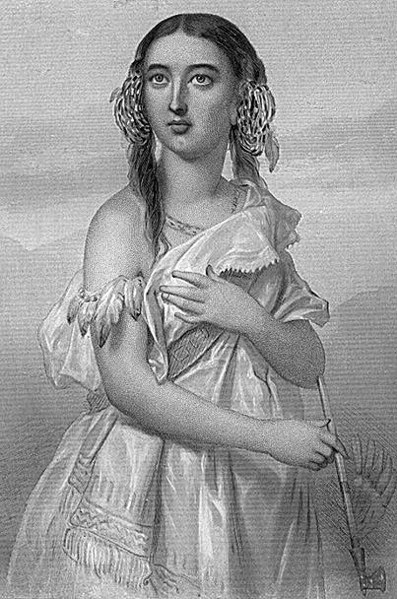
Pocahontas (1596-1617) was a Powhatan princess who famously aided English colonist John Smith and acted as a liaison between her tribe and the colonists. She was born in modern-day Virginia, the daughter of Chief Powhatan.
When John Smith was abducted by her tribe in 1607, Pocahontas is claimed to have saved his life. Legend has it that she pleaded her father to spare Smith’s life, and the two became friends as a result. Despite the fact that some historians doubt the authenticity of this story, it has become a significant part of Pocahontas’ reputation.
During the early years of the Jamestown settlement, Pocahontas was active in establishing trading relations with her tribe. In 1613, she was kidnapped by the English and held as a hostage. While in prison, she converted to Christianity and took the name Rebecca.
Pocahontas married Englishman John Rolfe in 1614 and had a son with him. She and her family traveled to London in 1616, where she was given to the royal court as a symbol of English colonization’s triumph in America. She became ill while in England and died in 1617, at the age of 21.
Pocahontas’ image as a symbol of early encounters between Native Americans and English invaders has been romanticized through time, but her story remains an important part of American history. She is remembered today as a strong and intelligent woman who was instrumental in the early years of American colonization.
2. Sacagawea
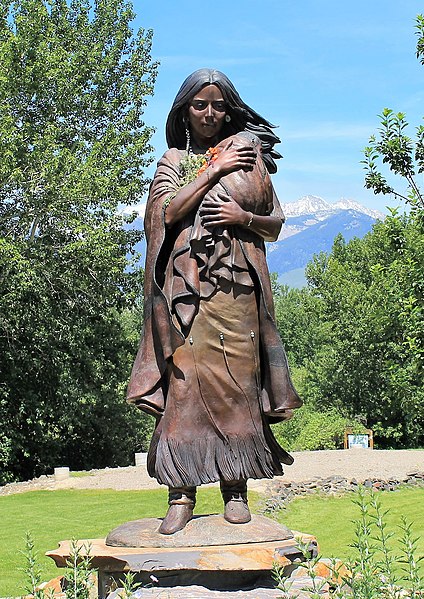
Sacagawea was a Lemhi Shoshone woman who served as a guide and interpreter on the Lewis and Clark Expedition. She lived between 1788 and 1812.
Meriwether Lewis and William Clark hired her as a teenager in 1804, to help them navigate the newly acquired Louisiana Territory and communicate with the Native American tribes they met.
Sacagawea was vital to the expedition’s success, assisting the explorers in obtaining food, water, and safe passage by utilizing her terrain expertise and language skills.
She also served as a liaison between the explorers and the Native American tribes they encountered, assisting in the creation of friendly ties and the acquisition of necessary supplies.
Sacagawea’s contributions to the Lewis and Clark Expedition were crucial, and she is now seen as a symbol of Native Peoples’ significant involvement in the exploration and settlement of the American West. She is also seen on the US $1 coin.
3. Wilma Mankiller
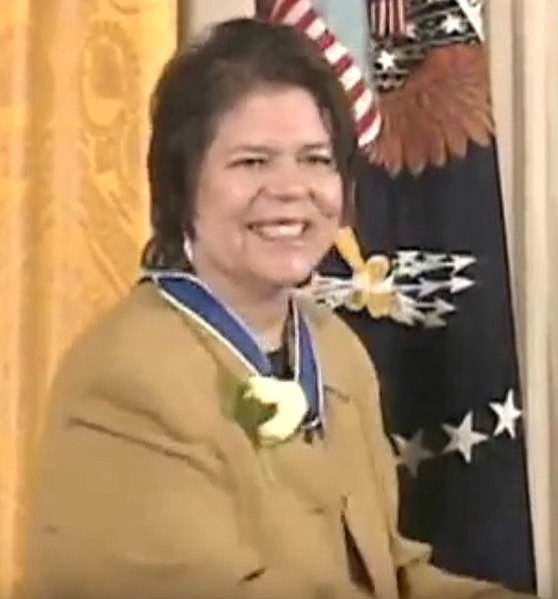
Wilma Mankiller (1945-2010) was a Cherokee activist and the first woman to serve as Principal Chief of the Cherokee Nation, the largest Native tribe in the United States. She was born in Oklahoma and raised in California, where her family had moved as part of the Indian Relocation Act in the 1950s.
Mankiller returned to the Cherokee Nation in the 1970s and became involved in community organizing to better her people’s living circumstances and healthcare. In 1983, she was named Deputy Chief of the Cherokee Nation, and in 1985, she was named Principal Chief, a position she held for ten years.
Also Read: Famous Native American Chiefs
Mankiller stressed education, healthcare, and economic opportunities for Cherokees throughout her tenure as Principal Chief. She also campaigned to promote tribal sovereignty and improve relations with the United States’ federal government.
Also Read: Famous Cherokee Indians
Mankiller received various honors and awards for her work and advocacy, including the Presidential Medal of Freedom in 1998. She passed away in 2010, but her legacy as a trailblazing leader and advocate for Native American rights goes on.
4. Maria Tallchief
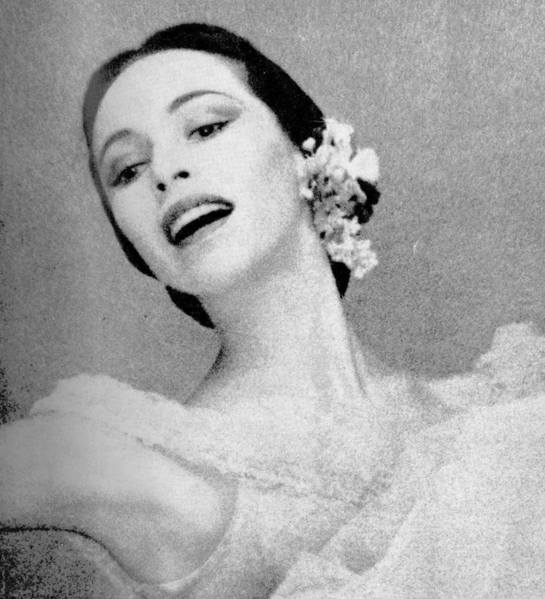
Maria Tallchief (1925-2013) was an Osage ballerina who was the first Native American prima ballerina in the United States. She was born in Fairfax, Oklahoma, and grew up on the Osage Reservation.
Also Read: Facts About the Osage Tribe
Tallchief began dancing at a young age and studied both ballet and Native American dance. In 1942, she debuted as a soloist with the Ballet Russe de Monte Carlo. She subsequently joined the New York City Ballet and ascended through the ranks to become the company’s first prima ballerina in 1947, a position she held for many years.
Tallchief was known for her technical prowess, grace, and artistry, and she was essential in popularizing ballet in the United States during the mid-twentieth century. She danced in several well-known classical ballets, including “Swan Lake,” “The Nutcracker,” and “Giselle.”
Tallchief retired from the stage and became a teacher and mentor to aspiring dancers. She received numerous awards and prizes for her contributions to the arts, including the Kennedy Center Honors in 1996.
Tallchief’s legacy as a trailblazing ballerina and cultural icon continues to inspire Native American and non-Native American dancers and artists alike.
5. Buffy Sainte-Marie
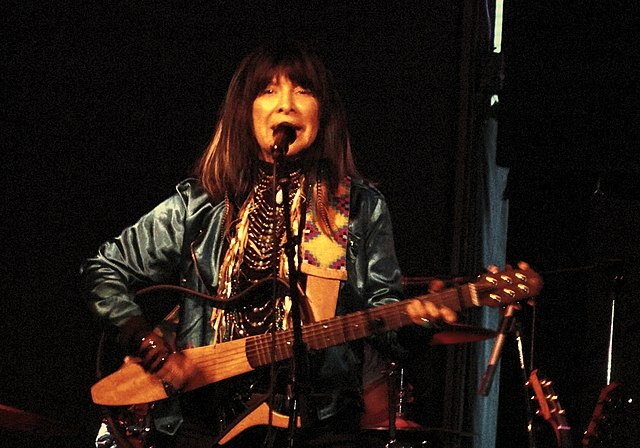
Buffy Sainte-Marie is a singer-songwriter, musician, activist, and educator of Canadian and American descent. She was born on the Piapot Cree First Nation reserve in Saskatchewan, Canada, on February 20, 1941. Sainte-Marie is of Cree descent and was reared by a non-Native household.
In the 1960s, she began her career as a folk singer and became known for her socially and politically sensitive compositions. Her 1964 song “Universal Soldier” became an anthem for the anti-war movement during the Vietnam War.
Sainte-music Marie’s is a distinct fusion of folk, rock, and Native American music. Throughout her career, she has recorded over 20 albums and received various prizes, including a Juno Award, an Academy Award, and multiple Native American Music Awards.
Sainte-Marie is an activist and educator in addition to her singing career. She has advocated for Indian rights and education, and she has created teaching resources that include Indigenous perspectives into the classroom.
Buffy Sainte-Marie has used her art and activism throughout her life to raise awareness about major social and political concerns, as well as to advocate justice and equality for Indigenous people and other oppressed populations.
6. Ada Deer
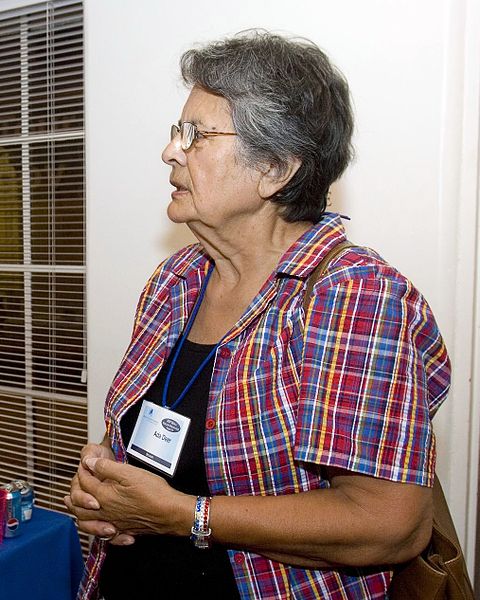
Ada Deer is a Native American activist, politician, and social worker. She was born on the Menominee Indian Reservation in Wisconsin, USA, on January 12, 1935. Deer is a Menominee Nation member.
She earned her bachelor’s and master’s degrees in social work from the University of Wisconsin-Madison and has worked in a variety of social service organizations. She was a co-founder of the American Indian Studies program at the University of Wisconsin-Madison in 1970.
Deer entered politics in the 1970s and was elected chairman of the Menominee Tribe in 1974. President Bill Clinton appointed her to the position of Assistant Secretary for Indian Affairs in the Department of the Interior in 1993. She was the first woman to be appointed to this position.
As Assistant Secretary, Deer sought to improve Native People’ lives while also protecting their sovereignty and self-determination. She assisted in the negotiation of agreements between tribes and the federal government, as well as in advocating for additional financing for tribal programs.
Deer maintained her advocacy work after leaving the federal government, sitting on different boards and committees and working to promote Indigenous rights and education. She was inducted into the National Women’s Hall of Fame in 2019.
Ada Deer is regarded as a political trailblazer for Native American women and has dedicated her life to improving the welfare of Indigenous people in the United States.
7. Winona LaDuke
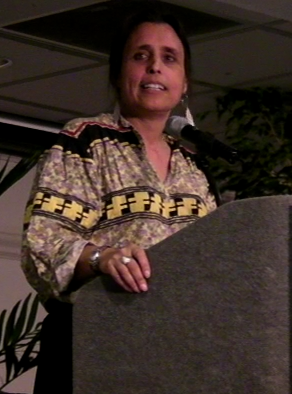
Winona LaDuke is a Native American activist, author, and political leader. She was born on the White Earth Indian Reservation in Minnesota, USA, on August 18, 1959. LaDuke is of Ojibwe and Jewish ancestry and belongs to the Anishinaabe Nation.
LaDuke studied economics, environmental issues, and Native American history and culture at Harvard University and Antioch University. She has dedicated most of her career to promoting Indigenous rights and environmental justice.
LaDuke has participated in a number of environmental projects, including efforts to safeguard tribal lands and natural resources. She has also worked to promote sustainable development and renewable energy, and she has formed various organizations to help achieve these objectives.
LaDuke is a writer who has written several books, including “All Our Relations: Native Struggles for Land and Life” and “Recovering the Sacred: The Power of Naming and Claiming.” She has also appeared on countless television and radio shows and spoken at conferences and events all around the world.
LaDuke has also been interested in politics, running for Vice President of the United States as the Green Party candidate in 1996 and 2000. She was also the executive director of the White Earth Land Recovery Project, which seeks to restore and conserve tribal lands and natural resources.
Winona LaDuke is a Native American environmental pioneer who has devoted her life to advancing Indigenous rights, environmental justice, and sustainable development.
8. Sarah Winnemucca
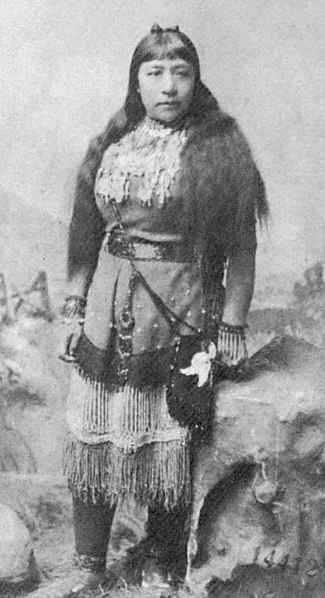
Sarah Winnemucca was a Paiute who lived between 1844 and 1891. She was a member of the Northern Paiute Tribe and was born in what is now Nevada, USA.
Winnemucca is well known for her late-nineteenth-century advocacy work on behalf of Native Americans. She toured extensively around the United States, speaking out against abuse of Indigenous peoples and advocating for policy changes.
Winnemucca published “Living Among the Piutes: Their Wrongs and Claims” in 1878, detailing her experiences growing up as a Native American in the American West, as well as the injustices she witnessed and experienced personally. The book was the first authored by a Native American woman and helped to raise awareness about the condition of Indigenous people.
Winnemucca also strove to better Native Americans’ lives through education. She built the first school on a reservation in the United States in 1879, a school for Paiute youngsters in Nevada. She believed that education was the key to empowering Native Americans and achieving equality and justice for them.
Sarah Winnemucca campaigned relentlessly for Native American rights and sought to develop understanding and respect amongst Indigenous and non-Indigenous peoples throughout her life. Her advocacy and leadership have elevated her to the status of a historical figure in Native American history and a role model for future generations.
9. Susan La Flesche Picotte
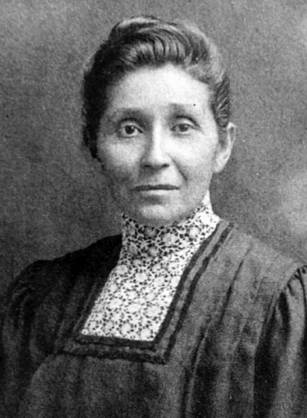
Susan La Flesche Picotte was a Native American doctor who lived between 1865 and 1915. She was a member of the Omaha Tribe and was born on the Omaha Indian Reservation in Nebraska, USA.
Picotte attended the Elizabeth Institute for Young Girls in New Jersey before studying medicine at the Women’s Medical College of Pennsylvania, graduating first in her class in 1889. She subsequently went to the Omaha Reservation to practice medicine, becoming the first Native American woman in the United States to do so.
Picotte worked tirelessly to enhance the health and well-being of the reservation’s residents, even going considerable miles on horseback to see patients. She also fought to improve hygiene and sanitation, as well as to combat tuberculosis and other diseases that ravaged Native American villages.
Picotte was a passionate advocate for Native American rights and sought to improve living conditions on the reserve in addition to her medical profession. She assisted in the establishment of a hospital on the reservation and created the Nebraska Society of American Indians, one of the earliest groups to advocate for Indigenous rights and representation.
Susan La Flesche Picotte’s dedication to promoting Native Americans’ health and well-being, as well as her advocacy work on their behalf, have made her an important figure in Native American history and a role model for future generations.
10. Gertrude Simmons Bonnin (Zitkala-Sa)
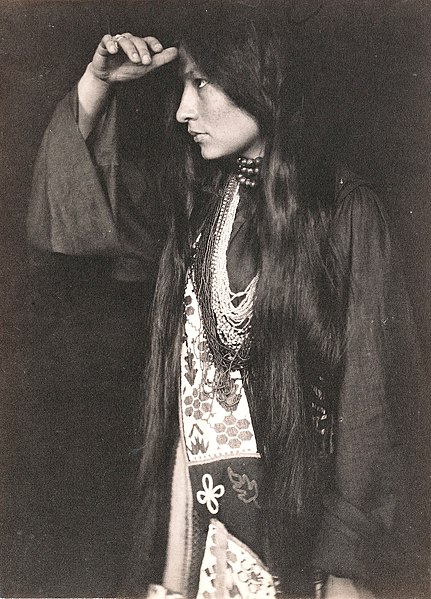
Gertrude Simmons Bonnin, also known as Zitkala-Sa, was a writer, musician, and political activist from Yankton, South Dakota. She was born on the Yankton Sioux Reservation in South Dakota, USA, on February 22, 1876.
Bonnin was taken to a Quaker boarding school when she was a child, where she was not allowed to speak her own language or practice her cultural practices. This event inspired her to become an advocate for Indigenous rights and to use her art and writing to bring attention to the injustices that Native Americans face.
Bonnin went on to attend college in Massachusetts and work as a writer and singer, promoting Native American culture and traditions. Her first book, “Ancient Native Tales,” was released in 1900, and it rehashed traditional Dakota myths. She went on to write numerous books and essays about her experiences as a Native American woman in a changing society.
Bonnin was a political activist who worked to advance Indigenous rights and representation in addition to her artistic activity. She was instrumental in the formation of the Society of American Indians, one of the first organizations to push for Native American rights and representation in government.
Bonnin’s advocacy activities and artistic accomplishments have elevated her to the status of a pivotal person in Native American history and a role model for future generations. She used her writing and singing to conserve and promote Native American culture and customs, while simultaneously pushing for Indigenous peoples’ justice and equality.
11. Anna Mae Aquash
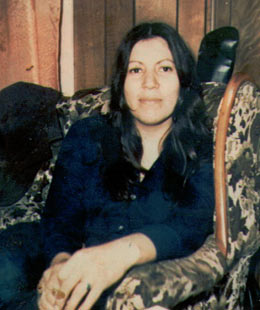
Anna Mae Aquash was a Mi’kmaq tribal member and Native American activist. She was born in 1945 on the Indian Brook Reservation in Nova Scotia, Canada, and grew up there.
Aquash joined the American Indian Movement (AIM), a grassroots movement that pushed for Indigenous rights and sovereignty, in the 1970s. She took part in a number of rallies and demonstrations, including the 1972 Trail of Broken Treaties, a caravan of Indigenous activists traveling to Washington D.C. to demand that the government uphold treaties and recognize Indigenous sovereignty.
Aquash was present at the murder of two FBI agents on the Pine Ridge Reservation in South Dakota in 1975, an event known as the “Pine Ridge Shootout.” In 1976, Aquash was discovered deceased on the Pine Ridge Reservation. Her death was considered a suicide at first, but her family and supporters believe she was murdered in revenge for her activism and knowledge of the Pine Ridge Shooting.
Aquash’s death drew global attention to the injustices that Indigenous people face in the United States, as well as raising concerns about the government’s handling of Indigenous activists. Her life and memory have now come to represent the ongoing fight for Indigenous rights and sovereignty.
12. Louise Erdrich
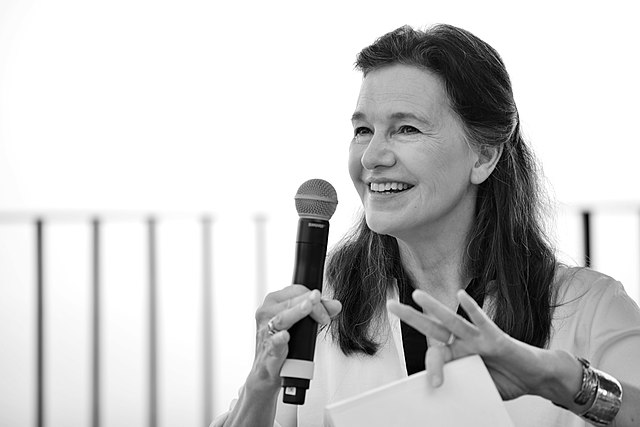
Louise Erdrich is a member of the Turtle Mountain Band of Chippewa Indians and a Native American writer. She was born on June 7, 1954, in Little Falls, Minnesota, in the United States.
Erdrich has published a number of novels, short tales, and poetry collections, many of which are about Native American experiences. Her work frequently addresses issues of identity, cultural history, and the interaction between Indigenous and non-Indigenous societies.
“Love Medicine,” “The Beet Queen,” and “The Round House,” which received the National Book Award for Fiction in 2012, are among Erdrich’s most well-known novels. She has also received numerous other writing awards and distinctions, including the PEN/Saul Bellow Award for Excellence in American Fiction and the Library of Congress Prize for American Fiction.
Erdrich is an advocate for Indigenous rights and education in addition to her writing. Birchbark Books, a Native American bookshop in Minneapolis, is co-owned by her, and she has been active in a number of Indigenous-led groups and initiatives.
Louise Erdrich’s writing and activism work have elevated her to the status of a cultural icon and role model for future generations. She has used her platform and voice to raise awareness about Indigenous peoples’ experiences and struggles, as well as to foster understanding and respect between Indigenous and non-Indigenous communities.
13. Mary Brave Bird (Ohitika Win)
Mary Brave Bird, also known as Ohitika Win, was a member of the Oglala Lakota Tribe and a Native American author, activist, and activist. She was born on the Pine Ridge Reservation in South Dakota, USA, on September 26, 1954.
In the 1970s, Brave Bird joined the American Indian Movement (AIM), a grassroots movement that pushed for Indigenous rights and sovereignty. She took part in a number of protests and rallies, including the 71-day occupation of Wounded Knee by AIM members and federal law enforcement in 1973.
In her memoir, “Lakota Woman,” released in 1990, Brave Bird wrote about her experiences growing up on the Pine Ridge Reservation and her activism. The book was a best-seller and received the American Book Award.
Brave Bird was an advocate for Indigenous rights and education in addition to her literature. She strove to foster understanding and respect between Indigenous and non-Indigenous communities, and she was involved in a number of efforts to enhance Native Americans’ lives.
Because of her writing and activism, Mary Brave Bird has become an important figure in Native American history and a role model for future generations. She used her voice and platform to bring attention to the injustices that Indigenous people endure, as well as to support justice and equality for all.
